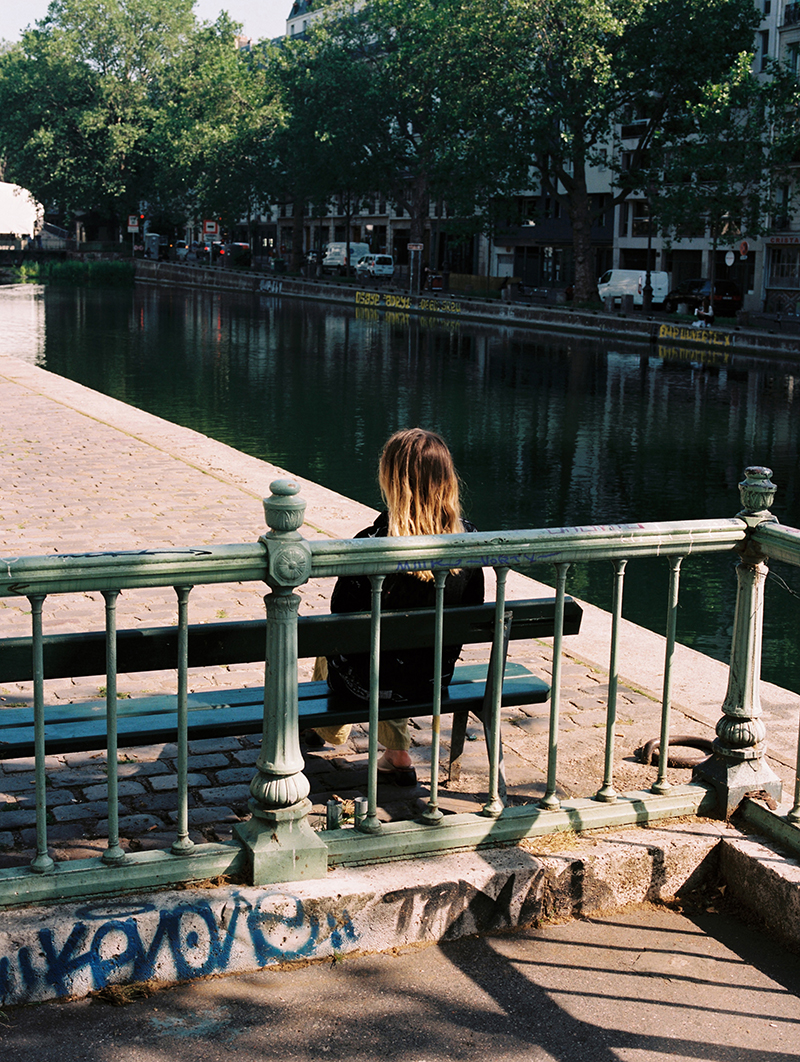Emotional Mercenaries
In May of 2021, Laurel Halo joined Nora Khan, Topical Cream’s Editor-in-Residence, to speak in-depth about her practice as an electronic composer and widely touring musician. The guiding frame of the talk was the themes of this year’s editorial frame, around maintenance and experimental models, as Laurel understands and explores them, and puts them into her practice with sound. The conversation was wide-ranging, touching on improvisation, unheard sounds, the medium of skin, Le Guin’s Carrier Bag Theory and translation of the Tao Te Ching, Yamashita’s burning piano work, Maryanne Amacher’s unheard sounds, Pauline Oliveros’s deep listening, and Carmen San Diego.
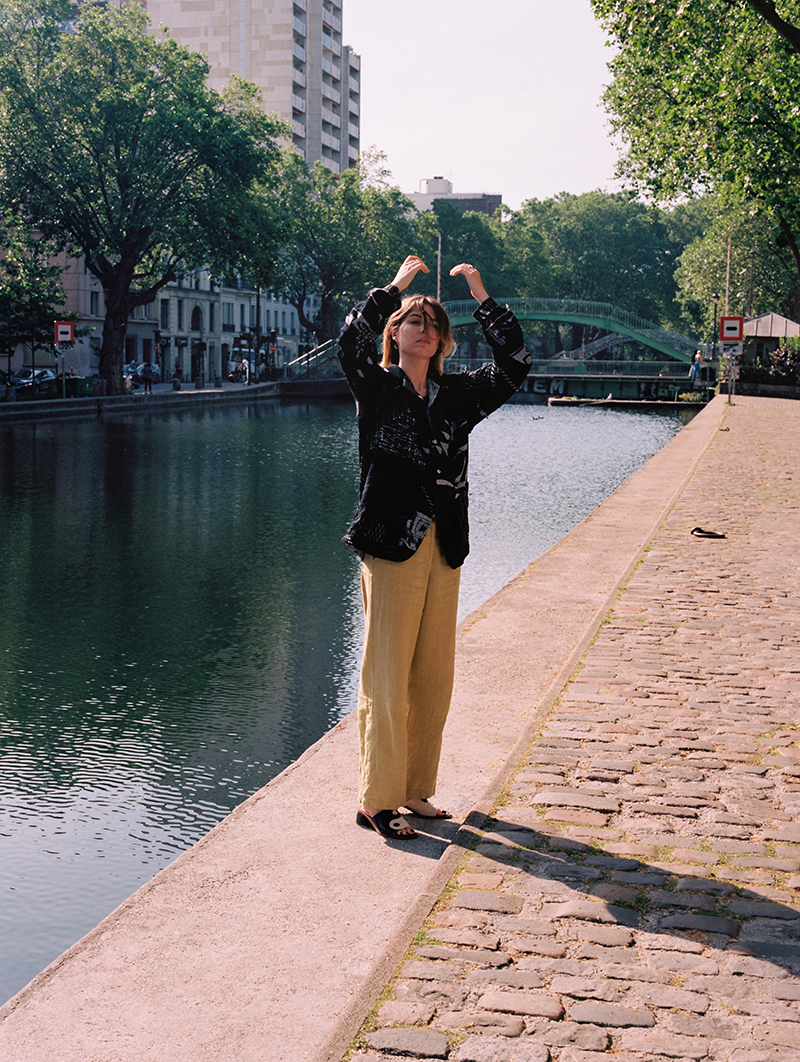
Nora Khan: Hi, Laurel. You’re in Paris, and I’m Providence, and we’re of course, on Zoom. Where are you there?
Laurel Halo: I am on Rue de Belleville in a hilariously Bohemian sublet. There’s ukuleles on the wall and an out-of-service hurdy-gurdy precariously sat on the edge of the bed platform. There’s a large Charlie Chaplin poster and a framed portrait of Herman Melville. A wall lined with Éditions Gallimard books with their beautifully minimal covers and spines. There’s an ever so charmingly out-of-tune piano, from which one could expect a spontaneous Yann Tiersen melody to burst forth. I mean, the Emily in Paris jokes from my friends are endless.
What kind of work are you doing in Paris? Are you in a residency there?
I am just working remotely and will have a short moment at the Ina GRM studios soon. I’m reading my first novel in French, Anomalie by Hervé le Tellier, a funny, meta sci-fi that won the Prix Goncourt. Making lists of verbs and finding new things at the grocery store. Wearing a mask on the street and not going to restaurants and kind of observing the couvre-feu (Covid Springtime in Paris!). For a time, I was working on a film score, which I eventually was fired from. I felt like a ball in a sixteenth-century experiment: I thought, this is gravity.
I remember you talking about film when we spent that day together in Detroit, sitting on our porch on Smith Street, facing the park. You were starting to work on scoring. This was three years ago now. You said, “I’m moving into composition, and I’m thinking about cinema’s sonic landscapes.” I remember that well. Do you enjoy film scoring?
Film scoring is completely different from releasing albums and touring. It requires you to take off the artist’s cap. You’re interpreting the director’s wishes for the music in order to realize the emotional tone of the film. It’s funny because, though I’m always painting with shades of emotion and feeling, and nuance and humor and cynicism, I still struggle with making specific music that doesn’t always meander through different instrumentations, tempos, emotional tones, that isn’t vague, that isn’t ambiguous. With film music, you have to be as specific as you can; you have to be almost an emotional mercenary. Because somewhere along the line, emotions need to be stirred up, need to be manipulated. How do you convey, “She’s feeling insecure but determined to win over a person who we all know is a loser”? To create music that’s mirroring the emotions of both the character and audience? It’s a challenge to make the music more specifically emotional and remove yourself completely from the equation.
But you also said “emotional mercenary,” which is the best thing I’ve heard.
“Emotional mercenary” is funny. Friends of mine who play and/or make techno, they’re like—“it’s hot. It’s devastating. Dangerous. It’s dark. It’s fast. You don’t know what’s going to happen. Anything could happen! It’s chaos energy! Aaahhh!” (Laughs.) It’s this ridiculous performance of this high octane, sexy, dark energy. I love it! And then you have people who play and/or make more erudite (or in other words, extremely particular subgenres of club music) who are like, “this is music that the heads know is good music. And if you’re dancing to this, you know that you are a dancer. You know, more than other people, how to hear the rhythms.” (Laughs.)
(Laughter-filled crosstalk.)
At the end of the day it’s pretty simple, “do I feel like dancing? Does this music make me want to dance?” Maybe it’s just me, but there’s always some kind of emotional manipulation happening, whether we realize it or not.
It’s fascinating. I think of one student I had in graphic design who was looking at soundtrack album covers from the last forty years. They made an archive of the covers, and were listening to the soundtracks while looking at the album covers, and then writing about what is being projected by each cover. The projection often has little to do with the film itself. They started with The Lion King, and zoomed out to the time it was written. Big Gulf War energy, and the nineties, and all that came with that. What kind of worldview can be read in an album cover?
I really like what you’re describing so precisely. Not only does one have to be an emotional mercenary, but one has to convey social capital in some way. The sound has to convey a knowing. The newness of the sound. The sound and all the constructs around it suggest the listener is one whose state of being is in the know. I don’t even know what the language for naming that is.
There’s something about music knowledge that can be very closed off or exclusive. You have your niche references and touchpoints that you are able to pull up; you can hit all of these reference buttons exactly at the same time, in order to open the cage. The secret. “Here’s the secret corridor behind the library.” …
Which is behind the club, which is behind the …
There’s a bit of ego wrapped up in this sort of knowingness as a culture. There’s perceived social capital in presenting oneself in a way that signals gravitas, knowledge, or awareness, or simply being an “Artist.” But like many women, I’ve had to unlearn apologizing and learn owning.
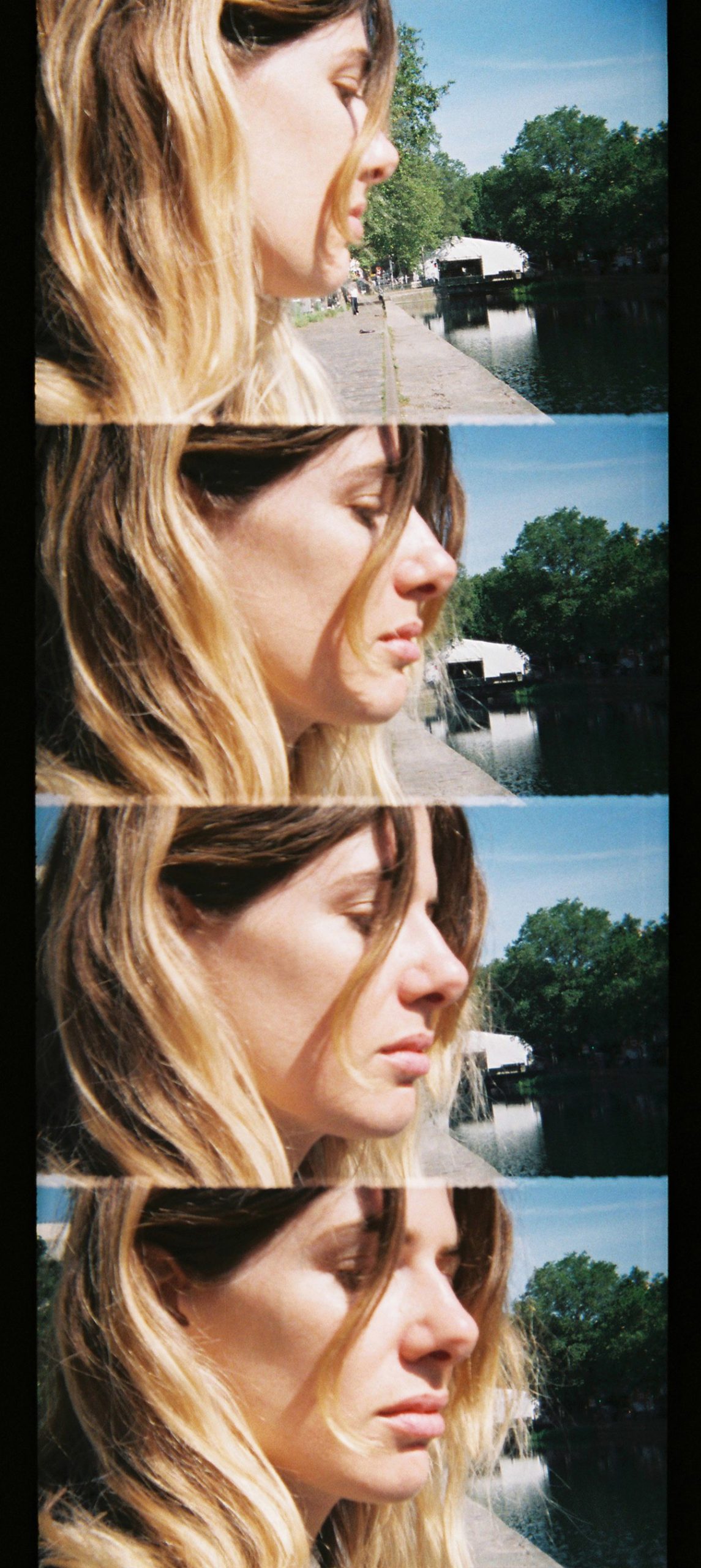
You spoke in an interview a few years ago about this demand to have a crafted image of being The Musician or The Artist: you said that it is a profoundly uninteresting space for you. I struggle. I’m happy when I wipe all followers and archive everything and reset, with a dramatic sweep; I want to disappear into the words. I feel strongly that this mentality, this constant attunement to the social capital element, is inimical to deep thinking. Thinking about who I am in relation to this ecology takes me out, splits me. Often, I want to disappear.
It’s this dual bind. On the one hand, you might have a small, but beautiful and dedicated group of people whom you could call fans, and they’re interested to know what you’re up to. What radio shows do you have, what releases do you have; what’s going on? You can’t just disappear entirely. But the constant presentation of one’s best life, well—you’re not always living your best life. Last year during lockdown, I started teaching myself jazz piano. I would often post videos of practice results, musical ideas I came up with. It felt like a way of connecting in the early days of pandemic reality.
What happens though? I end up getting carpal tunnel in November of 2020, and I haven’t played piano in six months. And it is of course devastating, because it is a source of relaxation to sit down and play. Not to mention the little dopamine rush when you make up a cool chord progression. Ultimately there was something nice about connecting in showing practice, development, progress, unfinished ideas, vulnerability essentially.
I was listening to your Carrier Bag Mix earlier. It helps me think about finding models elsewhere, of looking across genres, as well, for models. The group you gathered to speak and channel Le Guin is wide-ranging. One finds artists like Jenna Sutela, and writers, and people working with fungi. People who have a practice of making models for collaboration, gathering, and experimentation, across the spectrum.
For the past three years, I taught this class called Theory and Artistic Research. In this class, we read Le Guin’s The Carrier Bag Theory of Fiction. It is such a formative text for young artists who are tired of the way things are, in the art world or in the world-world. They’re looking constantly for alternatives to the current paradigm; they want to move away from the demand for legibility or domination or mastery or being the hottest item. Whether they’re in art school or they’re ten years into a practice, it feels many are re-examining the ways one has come to work. How does this demand to be legible, in these structures, interrupt a private, quiet impulse to experimentation?
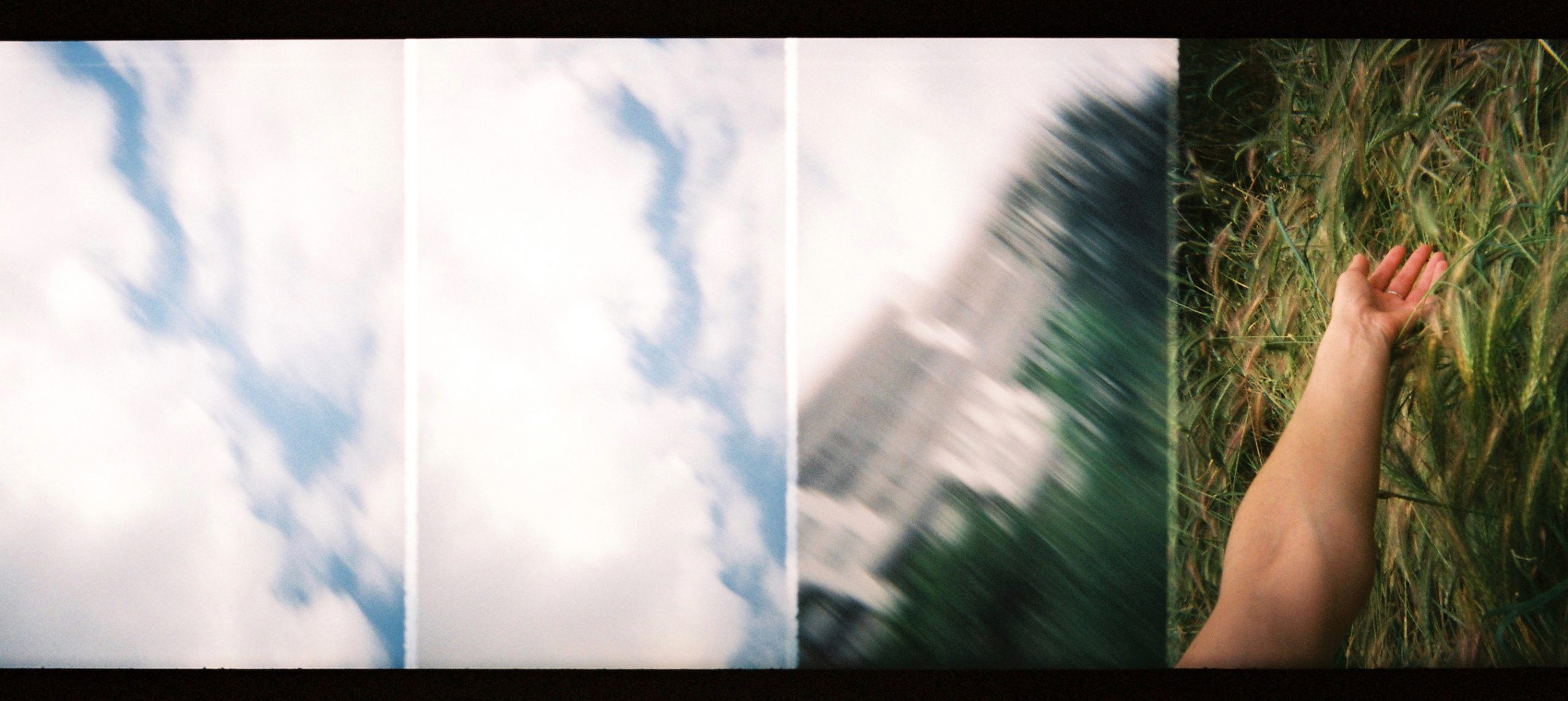
So when folks start to read this, the carrier bag, they’re like, “yes, that’s it, that’s what art is: it’s just this practice of gathering alone and with others, for years. It’s just assembling little bits of images and sounds and feelings together, outside the monolith of culture.” This is Le Guin’s model of the carrier bag, which I want to come back to. I began this line of thinking, in fact, seeing your short piano videos on Instagram. This part of practice is usually kept private. Of course, carpal tunnel being the outcome is absolutely awful.
I think the carpal tunnel was a product of COVID stress and life stress and relationship stress. I’m going to call it psychosomatic, because my technique is flawless, okay? Because I have mastered the piano, and I don’t need to practice it anymore. (Laughs.)
(Laughs.) I was in my jazz band in high school, getting to play jazz piano after years of classical piano. I had no idea what I was doing and was the happiest I’d ever been at a piano. It finally felt like piano was a joy. I felt more about the instrument than when I didn’t know what the hell I was doing.
Yes, there’s something so beautiful about just playing and improvising on the piano. I think it’s the nature of the instrument: it’s sympathetic, inviting. The barrier to entry to sound-making on piano is incredibly low. You can just put your whole forearm down on twelve keys and then you’ve made a beautiful piece of serious music.
There is a Kevin Beasley piece where they run their forearms all along piano keys. I think the piano was smashed.
Yes! One of the most amazing piano pieces I’ve seen was Yosuke Yamashita, a Japanese artist, in a full silver fireproof suit, sitting down to play a grand piano that he’s lit on fire on a beach. He’s just playing the shit out of this piano as it starts to burn and burn and burn. And then all of a sudden you can hear the strings, like—pop—pop—pop—the strings all start cracking, and then the body of the piano goes. Then the piece basically descends into silence. There’s no sound anymore, because the strings are completely removed.
Beautiful.
I try to avoid Twitter these days, but every time I log in, I always see some kind of ongoing debate. I saw one about whether people should release everything that they’ve ever made, or should only put out the best that they’ve done. And I remember Total Freedom had a hilarious take that was like, “put out everything, I want all of your garbage.” And I thought that that was so beautiful.
I’m of two minds. On the one hand, I’ve put out a couple of things where I feel, “well, this is just really sketchy. Maybe I should take this offline. Maybe I’ll do a Kanye and take it down: redo the tracks and put them out when they’re better.” But I also love when people put out stuff that is super raw and super fresh. There’s an energy that you don’t get from overly-produced, festival-ready, dead music.
Right before I cleared everything, I was doing little collage posts that felt freeing. I meet with a writing group every Saturday where we just dream together for two hours and free-write for two hours. I just wanted to post the free-writes, more than some essay I obliterated myself over for many months. I felt so much happier with the doodle that’s not perfect, but said something. I really looked forward to them, your piano videos. Something about hearing a friend, someone you respect, in-process—
There’s something so reassuring about that. It’s a reminder: I don’t have to be perfect all the time. And we’re all working with drafts. We’re all working with stuff that isn’t great and isn’t polished, that can’t be instrumentalized. There’s this sort of community building that happens in making yourself vulnerable and showing off your workshopping. And that’s pretty comforting when you’re mid-process. Between 2017–2019 I had been through three really heavy years of touring, I released two albums and one DJ mix album in quick succession. And then 2020 was the year that I was planning to take off, to write and reflect and make a new live set, to try out different sounds.
And so I’m still in that process now. When you’re trying to figure out, “what does the next album sound like? What is my next book going to be about? What’s my next series of paintings?” It’s kind of a scary thing. If you feel like days are going by and you’ve come up with one doodle, and you’re thinking, “I’m a loser, time to get a job”—well, there’s something calming and reassuring knowing that everybody else is also going through this at the same time. We’re constantly presented with best lives and best selves. I think it’s good to get away from that. There is something nice about there being this earthy, mycological underground network of friends and conspirators who are sharing information and sharing nutrients. Which doesn’t involve just one gigantic penis mushroom cap of “job accomplished, good job” on the top. I’m just kidding. Don’t put that in there. Or maybe put that in there.
“We’re constantly presented with best lives and best selves. I think it’s good to get away from that. There is something nice about there being this earthy, mycological underground network of friends and conspirators who are sharing information and sharing nutrients.”
(Laughs nervously.) Listening to friends’ voices in the Carrier Bag Mix: it was so tender. All these people I know, over all these years, spread out. This mycelium network of minds all around the world. The network of those we care for and I care for. Maybe a useful frame for this year: where do you find a community where you feel safe to doodle, to experiment, to be in-process together? Maybe there are hierarchies of public-facing or private-facing communities. There’s an audience that receives the final form. But with time, there’s also an audience for you that sees the process. An audience that sees and supports the experiments.
What does experimentation mean for you? Do you remember moments of how you learned to experiment or moments of play where you can recall the feeling of experimentation, as something that you now return to?
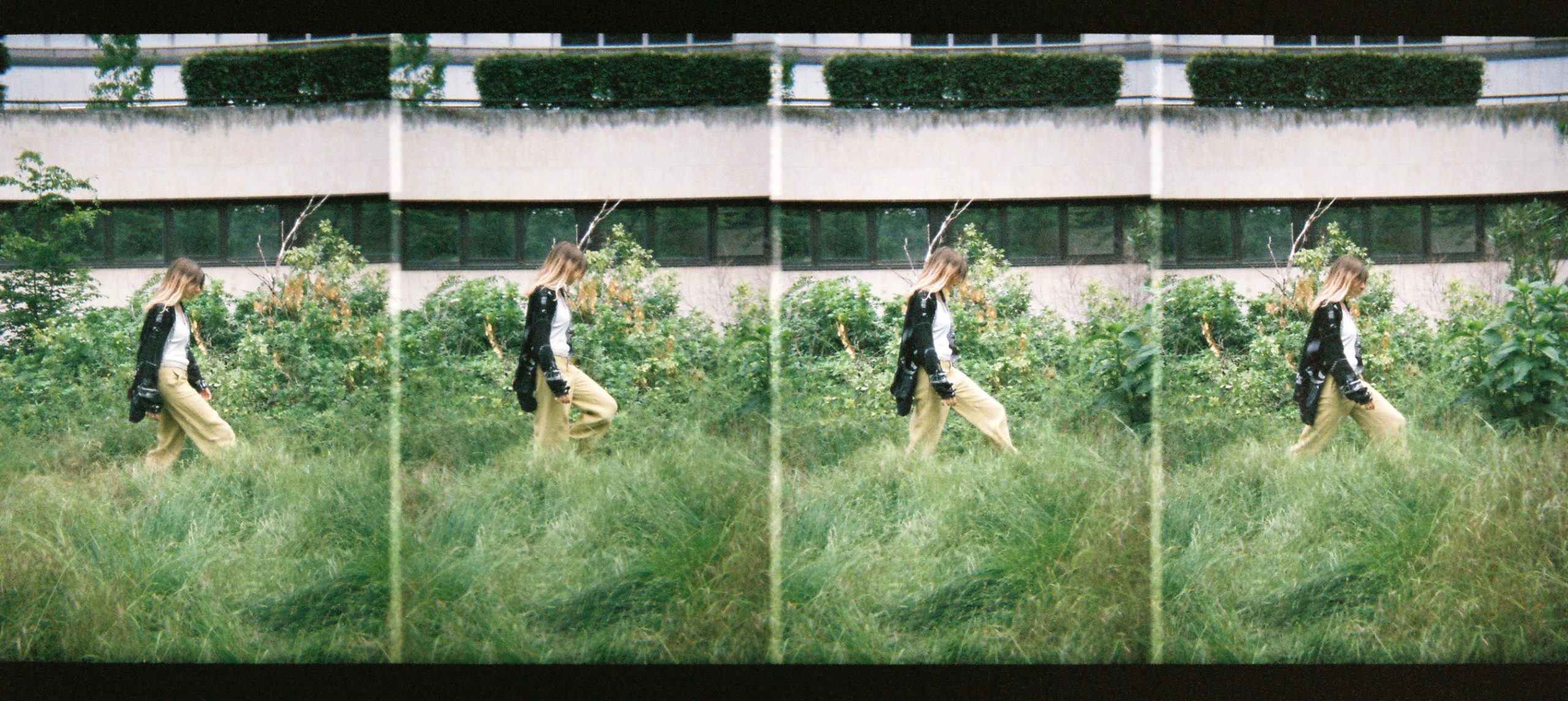
For sure, I was improvising before I knew what the word truly meant. For a while, I called it procrastinating. Because I was in music school, and studying classical piano, I would find myself—instead of practicing this difficult and boring piece that I didn’t really want to play—just making up bloops and passages and little songs. I never wrote any of it down or recorded it. I didn’t know how to record it. At the time, I just considered that procrastinating and having fun. And then, later, I ended up applying these procrastinating skills in a free improvisation ensemble in school, where it was like, “oh, you’re supposed to do this in a group, as an activity.” And it’s like breathing.
That was the first moment that I realized, this is music. You could apply a label like experimenting to it, too. I couldn’t see this when I was younger, maybe because I was a classical music student also studying literature. I wasn’t yet exposed to the vastness of experimental practice, from free improv and jazz to performance art, theater, dance, and the rest. At the time all I had were these masculine, monolithic figures, Beethoven, Liszt, Brahms, drilling equal temperament scales. It took me such a long time to get outside of that headspace, to realize that sketching and doodling, improvising and experimenting, were totally okay.
And it was not only okay, but fundamental to many forms of creative practice. When I auditioned for this improvisation ensemble, I essentially scammed my way into the group. They already had a piano player, but I also played the violin. So I practiced my a** off for four or five months, playing along to recordings, finding modal threads, rhythmic ideas. I was just trying to sound like this crazy violin whizz, even though I was a terrible violinist. I just went in there and played something batshit, to the entire group, for the audition. And the teacher Mark Kirschenmann (to whom I am eternally grateful) gave a nod of appreciation after I finished. And it gave me confidence: I thought (however misguidedly), “yeah, I can improvise.” I was accepted into the group, and I didn’t even know what I was doing! Those early moments of support and recognition were formative.
“Later, I ended up applying these procrastinating skills in a free improvisation ensemble in school, where it was like, ‘oh, you’re supposed to do this in a group, as an activity.’ And it’s like breathing.”
I think it’s important to note that I do not categorically dismiss the importance of technique developed through practice and repetition, hardly. Technique is fundamental both for the realization of a work’s final form and for free-playing, experimenting, improvising. But it was important for me in that moment to get away from the idea that music or literature or art could only exist as something with a precedent and as something monumental to stand the test of time. I was allowed to try something new, be bad at it, and get better through the act of doing, versus simply interpreting the obviously greater ideas of these mostly male authors and composers.
Did you, at that moment, whether in the ensemble or outside, feel like you had good models for that kind of work around you? People around you? In the ensemble, it sounds like people were all doing this work that felt like breathing. But can you think of people you admired early on, and thought, “I’d like to be like, think like, and emulate them? I want to be in the world like them, making like they are making?”
I guess at the time I had some idea that I wanted to embody this role of musician, but I didn’t have an ambition that I would be a touring or recording artist. So I didn’t have this idea in mind, that I want to be like this person or that person per se. Maybe it was too difficult for me to make that leap of imagination, that I could be someone or something. I remember when I was sixteen, I went to the Detroit Electronic Music Festival (DEMF) and I saw Magda deejaying, and she was one of a small handful of women who were playing. And I was like, “oh, maybe I could do that one day.” It was more the act of seeing her doing the thing rather than an insight, or epiphany, an “oh, this is exactly the path that I need to follow.”
I’ve seen Magda at Movement, too.
Were we there? What year was it?
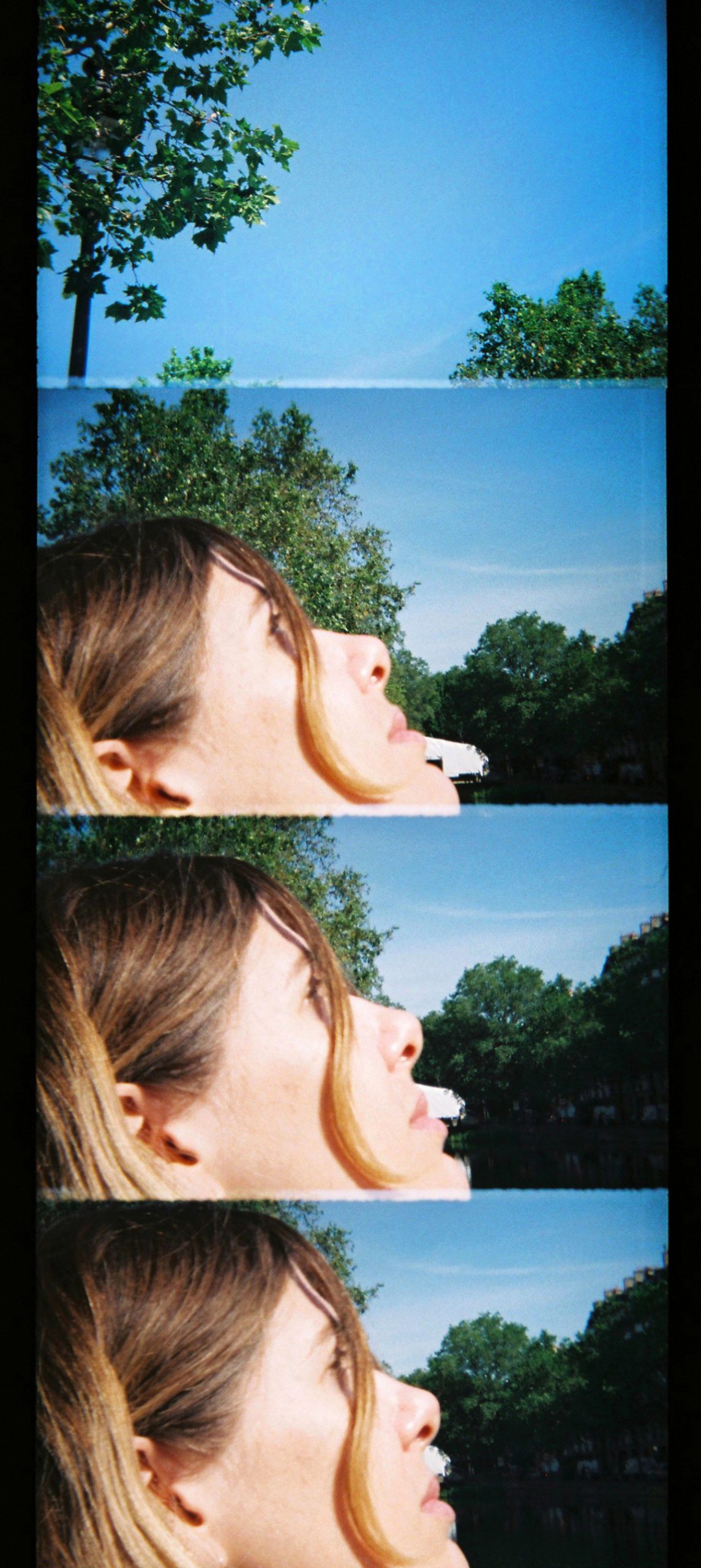
Maybe we were there at the same time. It’s so interesting. So you were thinking more, “hey, there’s a person who’s making it happen in a male-dominated space, one I could move toward.” Rather than, “here’s a specific model. Here’s a specific person who I want to aspire to be like.”
I’m wondering, were there moments in this time or in the years after, when you were thinking of being a musician, where you started to think of what you were doing as a process or as a practice? Where you thought of yourself as creating a set of tools? Perhaps such things are not necessarily legible in a single moment, as you were saying. Perhaps there were moments where you look back now and can say, “I can see, now, that I was inventing a way of practice for myself that wasn’t all related to what I was seeing around me.” In which you were actively inventing how you wanted to be and how you wanted to work.
That’s a good question. I don’t know if I have a concrete answer. I think that when I was starting out, I was just slowly accumulating equipment, recordings, knowledge of music history and music production, listening to lots of music. I couldn’t point to one moment where I was like, “I am an artist.” Or, “I’m doing something that is my practice.” And I’m sure maybe when I was in my early twenties, I was an arrogant d***head and I don’t remember any of the awful things I most likely said to people when I was living in New York.
(Laughs.) I think for many of us, those awful times are better left … unwritten.
“That was the first moment that I realized, this is music. You could apply a label like experimenting to it, too. I couldn’t see this when I was younger, maybe because I was a classical music student also studying literature. I wasn’t yet exposed to the vastness of experimental practice, from free improv and jazz to performance art, theater, dance, and the rest. At the time all I had were these masculine, monolithic figures, Beethoven, Liszt, Brahms, drilling equal temperament scales. It took me such a long time to get outside of that headspace, to realize that sketching and doodling, improvising and experimenting, were totally okay.”
(Laughs.) Yeah. Exactly. I don’t have a particular moment. I think I always felt like a loser. I remember at one point I was showing some friends of mine something that I had written on a Phim (a Thai mandolin-type instrument) and in the middle of it, I was just like, coming to tears. Because, I thought, “this is so pointless. They don’t give a shit. They’re like, ‘your work has no value. We’re bored just sitting here.’”
And I guess I felt like a loser until I didn’t.
Even now I’m starting to dive back into loser territory, but maybe loser territory is an important place to know, you know? On the one hand, it is important to be aware of one’s process. It’s important to be able to have the confidence to say, “I am this thing that I am doing.” But it’s also important to feel unstable and to … stay hungry, as they say. (Laughs.)
I’m curious about this notion of a return to a state of instability. Cycling through states of legibility to oneself or taking hold of one’s process, having one’s “process” be legible to yourself first, to say, “I have a practice, this is what I do. I get up and I do this and I fail at this. I tell the story of having a practice; I say it to be able to go on. This is like storytelling to oneself. I’m not sure what I’m doing, but I know I can’t do anything else now. I need to just keep telling myself that it’s something. And then, on the other side, is the abyss, that just goes on until eternity. I’m playing a pathetic little story on top of this vast unknown.”
You describe the state of loserdom, or the L-word. That’s empowering, somehow. I love it. Returning to loserdom. See-sawing, back and forth between capture and illegibility. I think of an architectural space, or just, a room. There’s this story, these little walls that we build around ourselves to protect us from the elements and harsh truth of the indifference of, ah, nature.
Not to be a total Ursula Le Guin stan, but, in one of the stanzas from her translation of the Tao Te Ching, she speaks about a pot. She translates the uses of the “not” in part as:
Hollowed out,
clay makes a pot.
Where the pot’s not
is where it’s useful.
Cut doors and windows
to make a room.
Where the room isn’t,
there’s room for you.
When creating, you have to be able to be okay with fully embodying the saying, but then also being empty at the same time, and not over-identifying with your role. And not taking too much stock in your work.
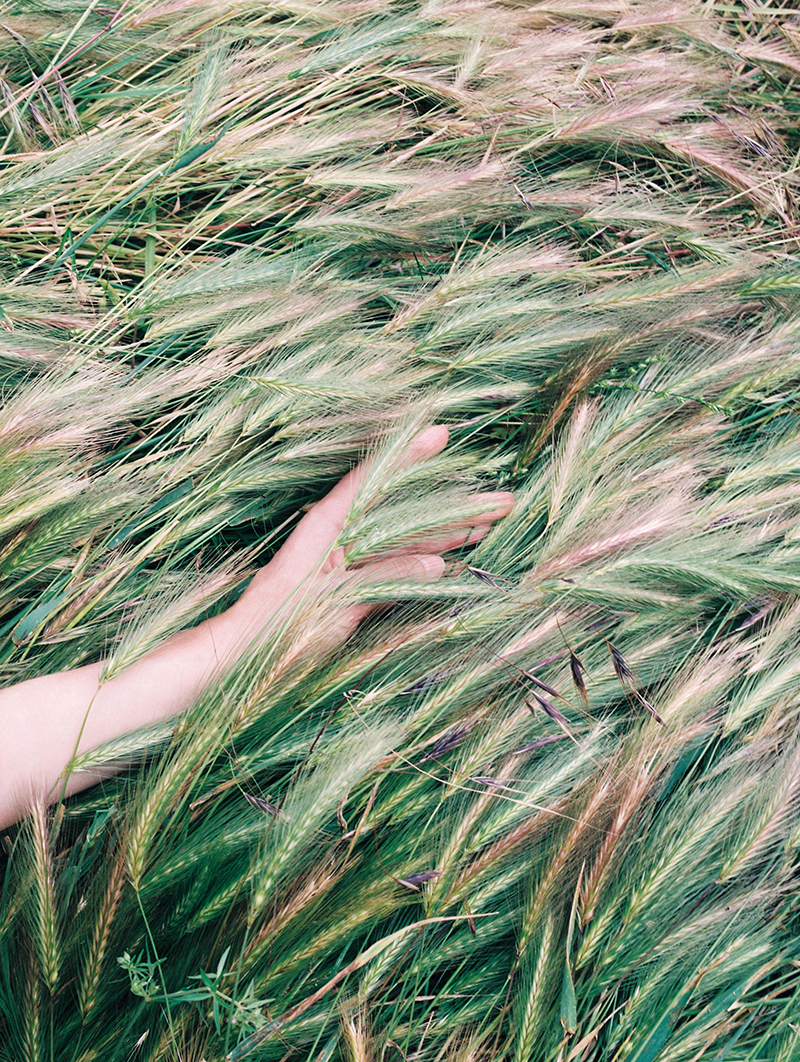
I wonder about this question of release and over-identification with a role or figure in relation to work as a maker. This came up in my teaching. Many students are young South Asian, East Asian women and non-binary students. They often say, “I don’t know anyone who is a musician in my family. I don’t know anyone who is an artist. I don’t have a model in my life to understand what I’m doing, only these dead figures in history, or shows I visit.” There’s no plug-in-and-go community. When folks don’t have any models at all, how does one start to feel that confidence? A sense that one has the work and can return to that place of solitude and experimentation? It takes a wild amount of confidence to do so. And it takes some ignoring of the world of politics around position and gender and class, all intersecting in ways that often end in you hearing, “what you are doing is not a real thing, because it doesn’t look like a thing yet to me.”
The first thing that I would say is to just be resilient, stupid, and brave. Of course, that is way easier said than done, and I still live with oscillations of faith, confidence, and disavowal. Ultimately, until I could show my family that touring was a real jibbidy-job-Job, that I could have a sustainable life off of it, they thought I was pursuing a hobby and, perhaps fairly or unfairly, a vain hobby. That was a lot of harsh energy, but maybe it was also fuel for me at the time. ’Cause I was like, “f*** you, Mom and Dad!” It was satisfying to prove them wrong and to quit the multiple other part-time jobs I had at the time.
(Laughs.)
I think maybe if we’re talking about models when we were children, and I can say this to you because I feel safe: I loved Carmen San Diego when I was a kid. There was something so empowering about this woman.
I loved her.
Who’s this bad bitch with her red trench coat, doing crazy things, traveling all over the world? She had such crazy style. She’s in my DNA. Hidden deep inside (or maybe not so hidden) is this Carmen San Diego energy. I’m dating my/ourselves—she was a computer game character from the ’90s.
“We need to let go of this idea that our best ideas happen when we’re young or that they happen quickly.”
In the absence of models, Carmen was so important for me. I wrote this long-running comic about a female investigator on horseback, modeled after Carmen San Diego. It was hundreds of pages long. Mad. It was how I learned about the world, through these perverted comics that I drew for years.
That’s play! The only advice I can give is to engage in your play and engage in your experimenting as much as you can, on your off-hours or downtime, and spend a lot of time learning about what you’re doing. Learning the language so that you can speak it and you can communicate it to other people. In the teaching work that I’ve done, the thing that I keep coming back to with students is helping them identify and refine their own individual languages. Especially when you’re trying to do something that’s a bit genre-fluid. It’s really important to define your taste, and know the things that you like. You continue gathering evidence and gathering information.
I mean, I feel like I’m still doing that. The beautiful thing also is that it changes over time, you know? So the things that you’re interested in when you’re a teenager are different from what you’re interested in when you’re twenty-one or twenty-seven or thirty-three or forty and so on. And abandon any time pressure. There’s always a shooting star who’s gonna make you insecure. You look up to this artist, see their trajectory, and think, “oh, they broke out when they were so young. I’m never gonna make it, because I’m twenty-nine this year.” Or, “I’m turning forty-seven this year.” You know, whatever age. We need to let go of this idea that our best ideas happen when we’re young or that they happen quickly.
Maybe also tied into that is: don’t worry about having to be hyper-prolific and having to release all the time. If you’re making good work, an audience will find it eventually. There’s no question.

It’s really beautifully said. I’ve been hearing a lot of people talking about injecting slowness. What if I do one thing a year? And it’s something I feel invested in at least trying to figure out. It’s so hard, now. The way people are producing now. Some people produce unbelievably fast. When I’ve been pressured to do that, or feel that external pressure, I’m working from a scarcity mindset. I’ve been quiet for too long. I need to do something. That, for me, is the worst place to be working from. And it is in conflict with the slow, deep kind of thinking.
Let’s move from modeling, careers, and paths, to that solitary space of composition and listening. For you. There’s a Maryanne Amacher quote in which she speaks of unheard sounds and how she pays attention to sounds that don’t have a name, yet, or that are hard to describe. And she wrote, “At about 15 c/s the labyrinth gives way to skin as the chief organ of vibratory sensibility for the human body. ‘Tone-of-place,’ ‘experienced,’ ‘heard,’ hearing through skin, detected by unnamed sensibilities.” This was part of a talk on “ear tones” and “perceptual geographies.” So, skin as a sensory organ for sound, and “anyone who has quaked to the embodied pulse of a deep bass will understand what she means.”
I was really compelled by this, because it was this moment where Amacher was literally describing her skin as a sensory organ for sound. She always had these activations of her audience that were spiritual and poetic alongside; she was thinking about where they would be moved. Here, work was rooted in a kind of (for better or worse, this term) pseudo-scientific research. She applied for so many grants in her life as a musician and would be turned down all the time, because what she was trying to describe seemed just beyond the pale of legibility. Her writing and music embody this moment of being right on the edge of an unknown sound, a sound just beyond the threshold of hearing.
She took this question seriously: “How do I spend my life making tools or making spaces in which I can just access sounds right on that edge, right on that line with the unknown?” You mentioned in an interview that you’ve been paying more attention to texture and sound in your work, and moving away from chords and harmony, toward, again, a kind of associative, intuitive compositional style. I am wondering how you read that Amacher quote, and if there are ways you think of sounds beyond hearing, or unknown sounds, or even unknown feelings that can be approximated or found through the sonic?
“It’s always interesting to try and conjure sounds that are potentially placeless, to try and conjure a texture or atmosphere that is not placeable. ”
Our body is such a miraculous instrument. When I first started doing body scan meditation, I could not stop thinking about the fact that my body is covered in skin, that it is just a container. Underneath the skin, it’s just tissue and viscera just waiting to burst forth. And that the skin covers the entire body with the exception of orifices and where nails are covering soft tissue (the “matrix” it’s called, apparently), or where hair is concealing skin. It’s this beautiful thing to consider that our bodies are these whole instruments through which we’re able to understand the world. The idea of the skin being a vehicle for hearing makes all the sense to me, because we have this vibratory capacity as physical bodies.
One of the first things to learn when you are a live musician is how to gauge and not judge the sound of a room during soundcheck when it’s empty. When there are physical bodies and masses of flesh in this space, the sound, the sound waves that travel throughout the room are going to be completely absorbed and altered. The reflections will be greatly reduced. The sound will be fuller and richer and warmer than what you’re hearing now.
The second thing—was it tone—tone of—
Let me draw it up again. “Tone of place.” “Experienced,” “heard,” and “hearing through skin, detected by unnamed sensibilities.”
I was reading Pauline Oliveros’s Deep Listening handbook. I’m not an Oliveros expert, but I really love this idea of sounds that carry intelligence because they trigger thoughts, memories: sounds as a vehicle for storytelling. And I think that what sounds bring to us is rooted in many preconceptions, from our taste in or exposure to music, film, fine art, fashion, literature.
It’s always interesting to try and conjure sounds that are potentially placeless, to try and conjure a texture or atmosphere that is not placeable.
I don’t know how much one can actually escape one’s conditioning. But it’s a worthy exercise, and something that I try to do when I’m making music. I’m always trying to either not do something that I’ve already done before, or do something that I haven’t heard before. I start to feel like I’m not fulfilling my duty as a creator to not try and push beyond what was already done before. And I know that that means that I’m going to, you know, constantly be meeting my own limitations and I’m going to fail most of the time.
“I don’t know how much one can actually escape one’s conditioning. But it’s a worthy exercise, and something that I try to do when I’m making music. I’m always trying to either not do something that I’ve already done before, or do something that I haven’t heard before. I start to feel like I’m not fulfilling my duty as a creator to not try and push beyond what was already done before. And I know that that means that I’m going to, you know, constantly be meeting my own limitations and I’m going to fail most of the time.”
I’ve been looking a lot at how to get involved in the Oliveros Deep Listening Institute. And then I found out that you can get a certificate in deep listening. Each of the acolytes seems to have an intense blog about their experiences. There’s a lot of writing about absence and questioning and unpacking, as they say.
I love this set of phrases you’ve made. A sound without a place. A sound that renders an atmosphere that can’t be placed. I’ve been looking at this video by Delores Catherino for years now. She’s talking through her continuum fingerboards. She has this beautiful lecture series on YouTube on her polychromatic pieces. She describes sound for a future audience that she hopes will be attuned to the polychromatic scale, and sound as it will be experienced in the future. I’m curious how you think about this—the ways that music itself can embody a kind of futuristic ethos, the way Catherino describes the moment of having 106 pitches or 112 pitches per octave in her fingerboard. As a moment not necessarily for our ears; maybe it is not yet for us to hear.
She creates these fingerboards to help others think about a polychromatic way of composition, and invites us to listen to the world along many different tones. And finds “polychromatic composition expresses a wider awareness of new intervals, harmonies, and interrelationships. It captures a more pluralistic way of thinking and culture.”
I was wondering if you think of compositions as giving clues for how to gather with other people, coming back to the Carrier Bag idea of shifting paradigms. So on one side, you have sound cluing you into the unknown, or something not yet heard. Are there ways to be, and futures, that are implied in a sonic world or composition?
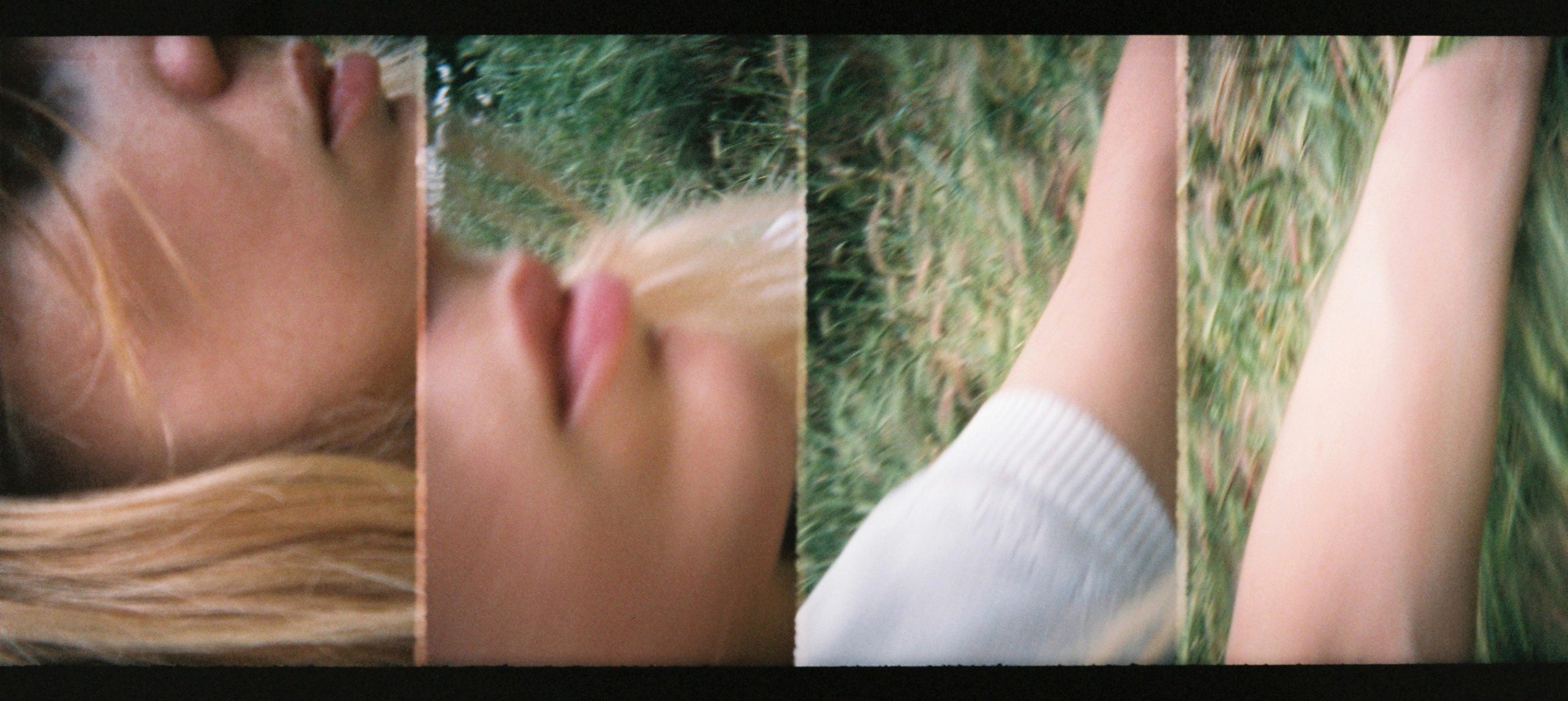
Music can be social; in a lot of ways it’s defined by shared experience, something performed and listened to, consensus reached about what we’re listening to and the quality of the sounds performed, mutual catharsis. But then at the same time, a lot of music that I love has been made in isolation, and without any reflection of or consideration for an audience, designed to be experienced essentially in isolation in one’s own head as a pure and personal listening experience.
For a long time, Eliane Radigue was her own satellite. She essentially created our contemporary concepts of drone music, or even ambient music long before Brian Eno, doing her own thing. She liked to say that she didn’t know what she was doing, that she was just learning as she went along. Of course, she dedicated herself to craft and technique; she studied under Pierre Schaeffer and spent several years working as an assistant to Pierre Henry, methodically and precisely working with tape loops and the rest. Plus she was a trained harpist. Nevertheless, she worked without precedents, without a wide supportive network, and in the face of that doggedly elegant and stylish misogynie, ultimately created the most impossibly beautiful and bizarre and troubling and healing music. I love that she reels a bit at the idea of people meditating or doing yoga to her music. I love her.
So, you have music that’s made to be experienced in a state of isolation. And through that isolation, you are able to identify with the unknown and therefore in a way, identify a bit with the future.
But this can also happen with explicitly social music; take house and techno, respectively from Chicago and Detroit, take the UK hardcore continuum: highly social music that drives innovation in technology, sound design, fashion. The narratives of happy accidents, alternative futures, and resistance. We have Phuture and Charanjit Singh to thank, Drexciya and Underground Resistance to thank, Kemistry & Storm to thank.
It’s tricky. Because there’s such a premium placed on music that sounds or looks aesthetically futuristic these days: “Wow, there’s an aggressive sound, it must be futuristic! Whoa, that’s a bold album cover, futuristic!” There’s a pathological obsession with newness, moreness. At the same time, music that is decidedly retro, genre-faithful, and legible is equally tedious. Where do you strike the balance? It’s hard to say.
Let’s end with an easy question, closing on practice and repetition. And mundane repetition. I ask myself, “what in art or writing or creative practice is worth all of the sacrifice?” And I return to this: that feeling when no one else is around. I know when writing is going well, it is pure pleasure. Like flight. Meditation is a way to get to that space. You feel all the horror of horrible neoliberal life falling away. You go further and further into this image, the listen in the middle of a Pauline Oliveros diagram, or maybe into the space right around it, marked by softer, and louder, organic and metrical rhythms.
To this question of maintenance over time, and how you think of maintaining an experimental practice over time: how do you maintain, how do you go on, and how do you help yourself go on?
You use your ears to listen. You use your hands to play instruments, or to sit at the computer and use a keyboard and do music production. And you use your breathing. You use your body when making, a lot. Music is a physical practice. Find a healthy way of engaging your body with your work and find a community of people that gives you energy. Develop resilience through repetition, through practice: be okay with being bad at something, with being bored and frustrated. Be okay with being in pain but also know your limits, when to say, “Stop, this doesn’t feel good.”
And how do you imagine your practice extending over time? What would it look like?
Lots of bad albums and maybe one good novel.
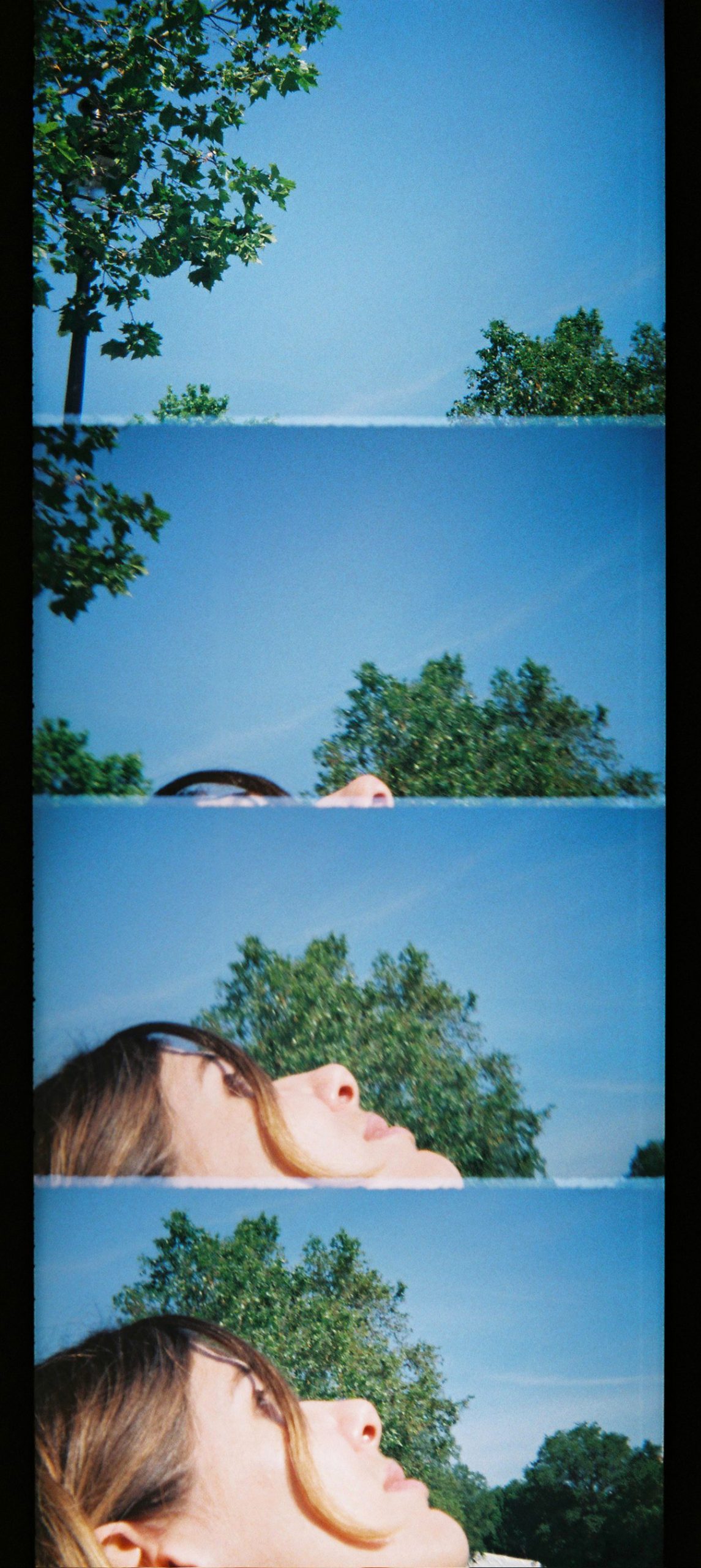
Nora Khan is a critic, curator, and editor. She is the 2021 EIR of Topical Cream.
All photographs by Cassandre Lafon.
